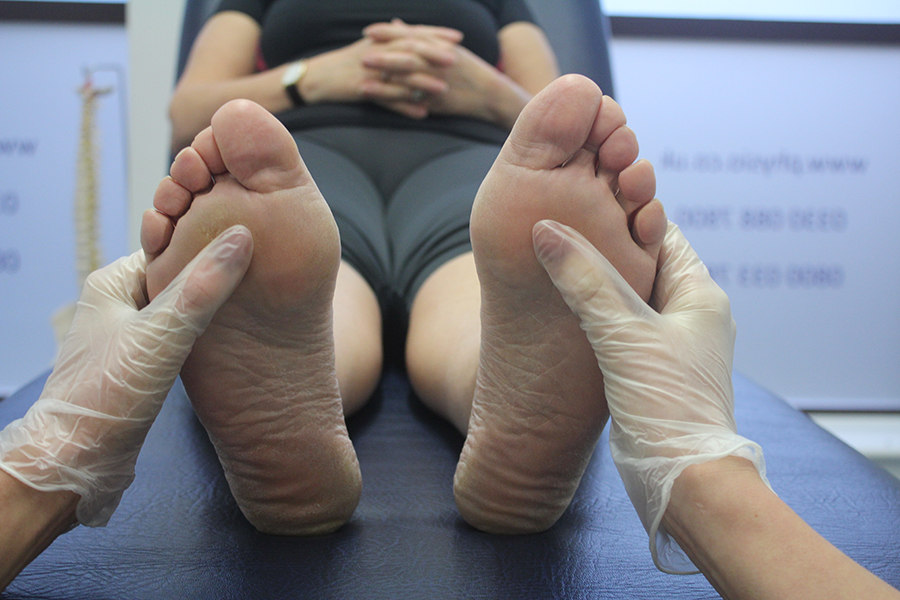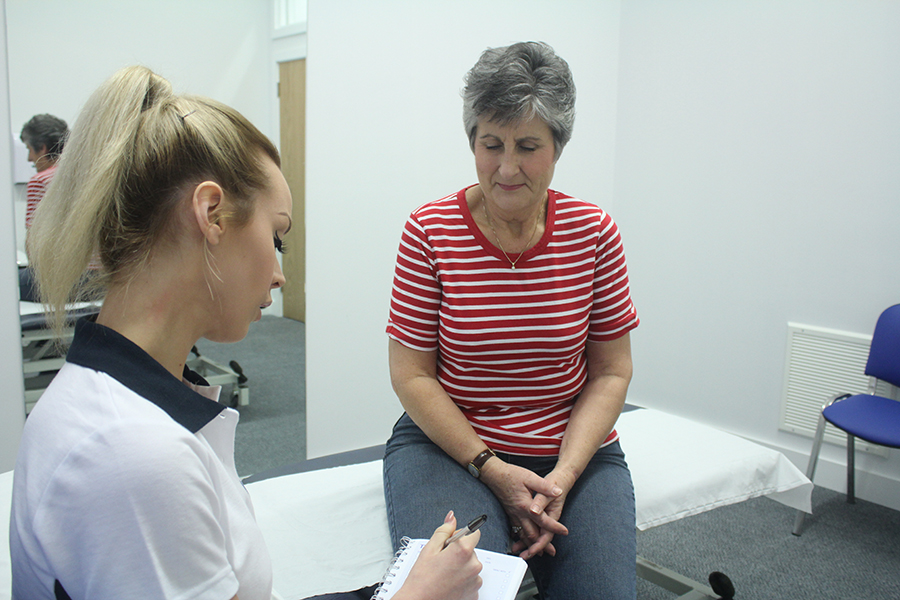Accessory navicular syndrome
Accessory navicular syndrome is a painful condition that affects the foot. An accessory bone is an extra piece of bone not normally found in the human skeleton, those that have accessory bones were born with them; this means that accessory bones are congenital.
Accessory navicular syndrome is a condition characterized by pain at the site of the navicular. The pain associated with accessory navicular syndrome occurs as a result of aggravation of either the posterior tibial tendon (which has an attachment at the navicular), or from irritation to the connecting fibrous tissue that sits between the accessory bone and the navicular.
The navicular is a small bone on the upper inside of the foot, which together with the calcaneus, talus, cuboid, and the three cuneiforms forms the tarsus. The tarsal bones are important because together they provide a strong weight-bearing platform that is necessary for walking.
An accessory bone or 'ossicle' is an extra piece of bone. Accessory bones are quite common and for many people an accessory bone will not produce any symptoms, however, for others they can be a great source of pain. Accessory bones are congenital; this means they are present from birth.
Accessory navicular syndrome will only occur in those who were born with an accessory bone to the navicular. Most people with an accessory bone at the navicular will not have any problems; those that do experience pain do so as a result of irritation, which can be caused by, for example:

If you have any of the following signs and symptoms you may have accessory navicular syndrome:
There are three types of accessory navicular, these are:
Type 1
A type 1 accessory navicular is small and either round or oval, and sits within the posterior tibial tendon. Class 1 accessory naviculars are called sesamoids (a sesamoid is a bone that sits within a tendon).
Type 2
A type 2 accessory navicular is bigger than type 1, it is bullet shaped and is attached to the tuberosity of the navicular by a synchondrosis (a cartilaginous joint). A type 2 accessory navicular is most commonly associated with symptoms.
Type 3
A type 3 accessory navicular is quite prominent and is described as horn shaped. A type 3 accessory navicular is believed to be a type 2 that has fused.
At Chiropody.co.uk we will diagnose accessory navicular syndrome based on the physical signs and symptoms and an examination of the area.
If you have accessory navicular syndrome Chiropody.co.uk can help you. The following benefits may be achieved following podiatric assessment and treatment:

Your podiatrist will begin by taking a thorough and comprehensive medical and social history. The podiatrist will then perform a footwear assessment and an examination of both feet. If you require orthotics to alleviate symptoms you may be referred for a Biomechanical assessment. The podiatrist may give you a steroid injection to alleviate painful symptoms.
Treatment for accessory navicular syndrome may include:
Accessory navicular syndrome is a painful condition of the foot. An accessory bone is an extra piece of bone not normally found in the human skeleton, those that have accessory bones were born with them; this means that accessory bones are congenital. The pain associated with accessory navicular syndrome occurs at the site of the navicular and can be caused by; the shoe rubbing, overuse, or trauma to the area. The signs of accessory navicular syndrome include redness and swelling, pain, and a bony lump on the upper inside of the foot; this is where the navicular is positioned. There are a number of treatment options for accessory navicular syndrome; a podiatrist will be able to advise you on these and devise a treatment plan specific to you.
To arrange an assessment with one our podiatrists please email office@chiropody.co.uk or call 0330 088 4222.
What is accessory navicular syndrome?
Accessory navicular syndrome is a condition characterized by pain at the site of the navicular. The pain associated with accessory navicular syndrome occurs as a result of aggravation of either the posterior tibial tendon (which has an attachment at the navicular), or from irritation to the connecting fibrous tissue that sits between the accessory bone and the navicular.
The navicular is a small bone on the upper inside of the foot, which together with the calcaneus, talus, cuboid, and the three cuneiforms forms the tarsus. The tarsal bones are important because together they provide a strong weight-bearing platform that is necessary for walking.
An accessory bone or 'ossicle' is an extra piece of bone. Accessory bones are quite common and for many people an accessory bone will not produce any symptoms, however, for others they can be a great source of pain. Accessory bones are congenital; this means they are present from birth.
What causes accessory navicular syndrome?
Accessory navicular syndrome will only occur in those who were born with an accessory bone to the navicular. Most people with an accessory bone at the navicular will not have any problems; those that do experience pain do so as a result of irritation, which can be caused by, for example:
- Shoes rubbing
- Overuse
- Trauma to the area

What are the signs and symptoms of accessory navicular syndrome?
If you have any of the following signs and symptoms you may have accessory navicular syndrome:
- Redness and/or swelling at the site of the navicular
- Pain (usually during and after activity)
- A prominent bony lump at the upper inside of the foot, just above the arch
Types of accessory navicular
There are three types of accessory navicular, these are:
Type 1
A type 1 accessory navicular is small and either round or oval, and sits within the posterior tibial tendon. Class 1 accessory naviculars are called sesamoids (a sesamoid is a bone that sits within a tendon).
Type 2
A type 2 accessory navicular is bigger than type 1, it is bullet shaped and is attached to the tuberosity of the navicular by a synchondrosis (a cartilaginous joint). A type 2 accessory navicular is most commonly associated with symptoms.
Type 3
A type 3 accessory navicular is quite prominent and is described as horn shaped. A type 3 accessory navicular is believed to be a type 2 that has fused.
How is accessory navicular syndrome diagnosed?
At Chiropody.co.uk we will diagnose accessory navicular syndrome based on the physical signs and symptoms and an examination of the area.
Benefits of podiatry for accessory navicular syndrome
If you have accessory navicular syndrome Chiropody.co.uk can help you. The following benefits may be achieved following podiatric assessment and treatment:
- Reduction in inflammation
- Reduction in pain
- Improved foot and lower limb mechanics
- Cause not just symptoms treated

What would podiatry for accessory navicular syndrome involve?
Your podiatrist will begin by taking a thorough and comprehensive medical and social history. The podiatrist will then perform a footwear assessment and an examination of both feet. If you require orthotics to alleviate symptoms you may be referred for a Biomechanical assessment. The podiatrist may give you a steroid injection to alleviate painful symptoms.
Treatment for accessory navicular syndrome may include:
- Anti-inflammatory advice
- Orthoses
- Steroid injections
- Advice and education
- Immobilization
- Footwear review
- Surgery
Summary
Accessory navicular syndrome is a painful condition of the foot. An accessory bone is an extra piece of bone not normally found in the human skeleton, those that have accessory bones were born with them; this means that accessory bones are congenital. The pain associated with accessory navicular syndrome occurs at the site of the navicular and can be caused by; the shoe rubbing, overuse, or trauma to the area. The signs of accessory navicular syndrome include redness and swelling, pain, and a bony lump on the upper inside of the foot; this is where the navicular is positioned. There are a number of treatment options for accessory navicular syndrome; a podiatrist will be able to advise you on these and devise a treatment plan specific to you.
To arrange an assessment with one our podiatrists please email office@chiropody.co.uk or call 0330 088 4222.
Save 5% by booking an appointment online.

Find your nearest clinic
We have clinics located throughout the North West. We also provide a home visit service.
Find out more »

No waiting lists!
Tired of waiting for treatment? Be seen by a podiatrist today!
Find out more »

Not sure how we can help?
Speak to a podiatrist to find out how we can help. Call us on 0330 088 4222.
Find out more »
We work with:

Individuals

Organisations

Health professionals
Get in Touch!
0330 088 4222
If you would like to speak to one of our specialists then please complete this form.
We are open 7 days a week








